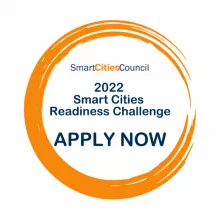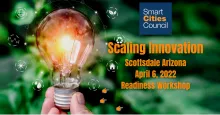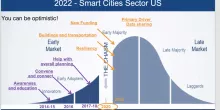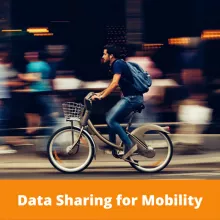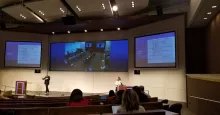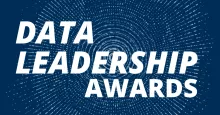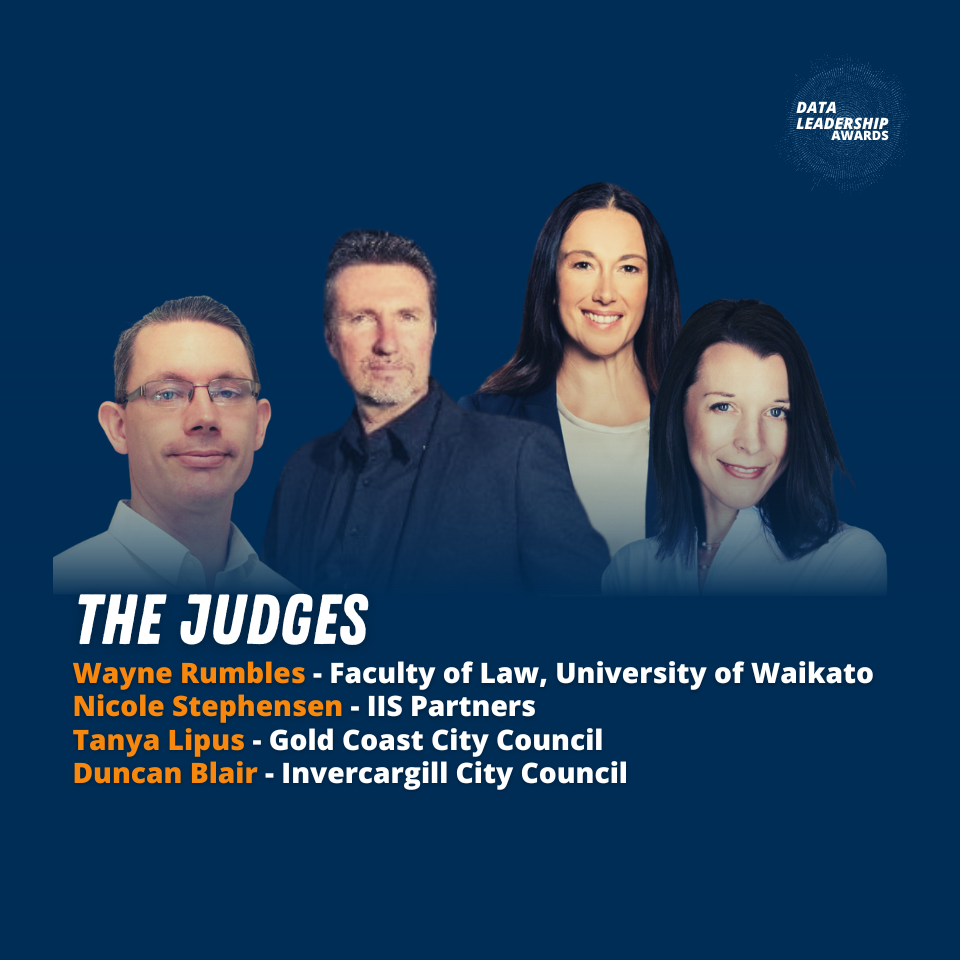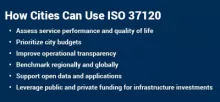Located in the beautiful Sonoran Desert, Scottsdale is an internationally recognized visitor destination and a thriving location for businesses of all kinds. Now, the high-performing city is looking to accelerate innovation and scale the use of technology to solve community challenges and improve people’s lives. The city plans to engage with the community around Sky Song, the ASU Scottsdale Innovation Center, to build an innovation hub. Scottsdale will explore innovative scoping, procurement and contracting processes that can scale workable solutions throughout the city.
” Our goal is to engage with the people of Scottsdale to gauge their interest in using technology to help solve community challenges and improve their lives,” explained Brent Stockwell, Assistant City Manager, city of Scottsdale. “We are looking forward to participating in the Smart City Readiness Challenge to accelerate our ability to scale smart city solutions throughout our community.”
Contact the Council for an invite to Scottsdale's Readiness Workshop on April 6
Using Citizen Engagement to Drive Innovation
Citizens are the eyes and ears of a city and often identify issues faster than a city’s own staff. Their feedback is vital to helping understand which improvements to make not only to avoid problems but to enable growth and prosperity. Taking citizen engagement to the next level means putting tools and technology in place that enable a city to nurture this two-way street.
Yet, McKinsey & Company has pointed in a recent report how many cities become enamored with technology and implement projects for ‘technology’s sake.’ These projects start with much fanfare and press releases; but more than often flounder for lack of stakeholder support. Concomitantly, these technology projects often create a whole new set of problems on their own because of poor data governance (privacy) and no or little citizen engagement. Sidewalk Labs Quayside project in Toronto and the recent issue of camera surveillance in San Diego are examples.
Data about citizen engagement will drive projects
Scottsdale is determined to do this differently and with the year-long assistance of the Smart Cities Council will kick off a series of stakeholder engagements that will implement projects starting in the area surrounding the Sky Song Innovation District, that city residents agree meet their needs.
- The first such workshop is on April 6, 2022 at Scottsdale Stadium in Scottsdale.
- The following day, April 7, 2022 at Scottsdale Stadium we will have a follow up workshop on 5G, Broadband and IoT Applications and Funding sponsored by the Council’s partner Dense Networks. This workshop has leaders from Scottsdale, Tucson and Maricopa County sharing use cases, best practices and current initiatives.
Vision
Starting with the vision for the Sky Song Innovation District, Brent Stockwell, the Deputy City Manager for Scottsdale accompanied by partners in the project will review the vision for Sky Song and how it is to be used both for Scottsdale and the other 24 cities in the Phoenix region as a model for citizen engagement and innovation.
Similar projects from other cities in the Collective (Phoenix’s 24 cities organization) including major initiatives for Broadband builds and funding, Noise abatement IoT project, SunCorridor Middle Mile.
Driving this year-long engagement Scottsdale will engage as follows:
- People and technology: Instead of planning for technology or business-model demonstrations, innovation districts can operate as a model where site-specific placemaking is in response to data about community engagement. Data about life-style characteristics of a community (outdoor recreation, arts and crafts, higher education or nightlife) can lead to transportation, built environment and community centered improvements that make a community resilient and improves its well-beings.
- Data and analytics: this type of approach - an innovation district as the epicenter of a city’s renaissance can be achieved with data and analytics. Using information learned from citizen engagement data and analytics, Scottsdale will explore use-cases and study existing successful projects for replication.
Using data about citizen engagement
Smart Cities Council and its partners will review how data can be collected about citizen engagement from citizen activities that involve mobility and the built environment. Case studies about how sentiment, emotion and activity can be used to determine the level of citizen engagement and their needs.
What data best reflects citizen’s needs?
From a data and analytical perspective, what data is needed to improve outcomes? How can we measure human side of places? Is it sentiment? Is it engagement? Is it through mobility data or social media analysis? Further, how can Scottsdale and other cities use this citizen engagement data to prioritize projects?
With data, mapping and scoping become key
Once data is understood, how can Scottsdale use that data to scope projects that meet that need. Using Smart Cities Activator, the Council’s online collaboration tool, which Scottsdale has access to during the year-long engagement - Scottsdale, the Smart Cities Council and its partners, along with other stakeholders’ map needs to solutions and then scope those solutions?
Scaling Solutions
With data about citizen needs and a mapping to solutions, now the question is how do you implement and scale? What are the processes based on procurement, implementation and finance that would scale solutions to meet citizen’s needs?
Finally - back to projects and citizen engagement
Cities with projects and experts meet in roundtable session to review how they could use each of the techniques discussed to implement and scale to meet citizen needs -
- What data about citizen engagement is needed for a specific project?
- How is it analyzed?
- How does that data help map to a solution?
- One mapped how can that solution be accelerated, scaled and replicated?

